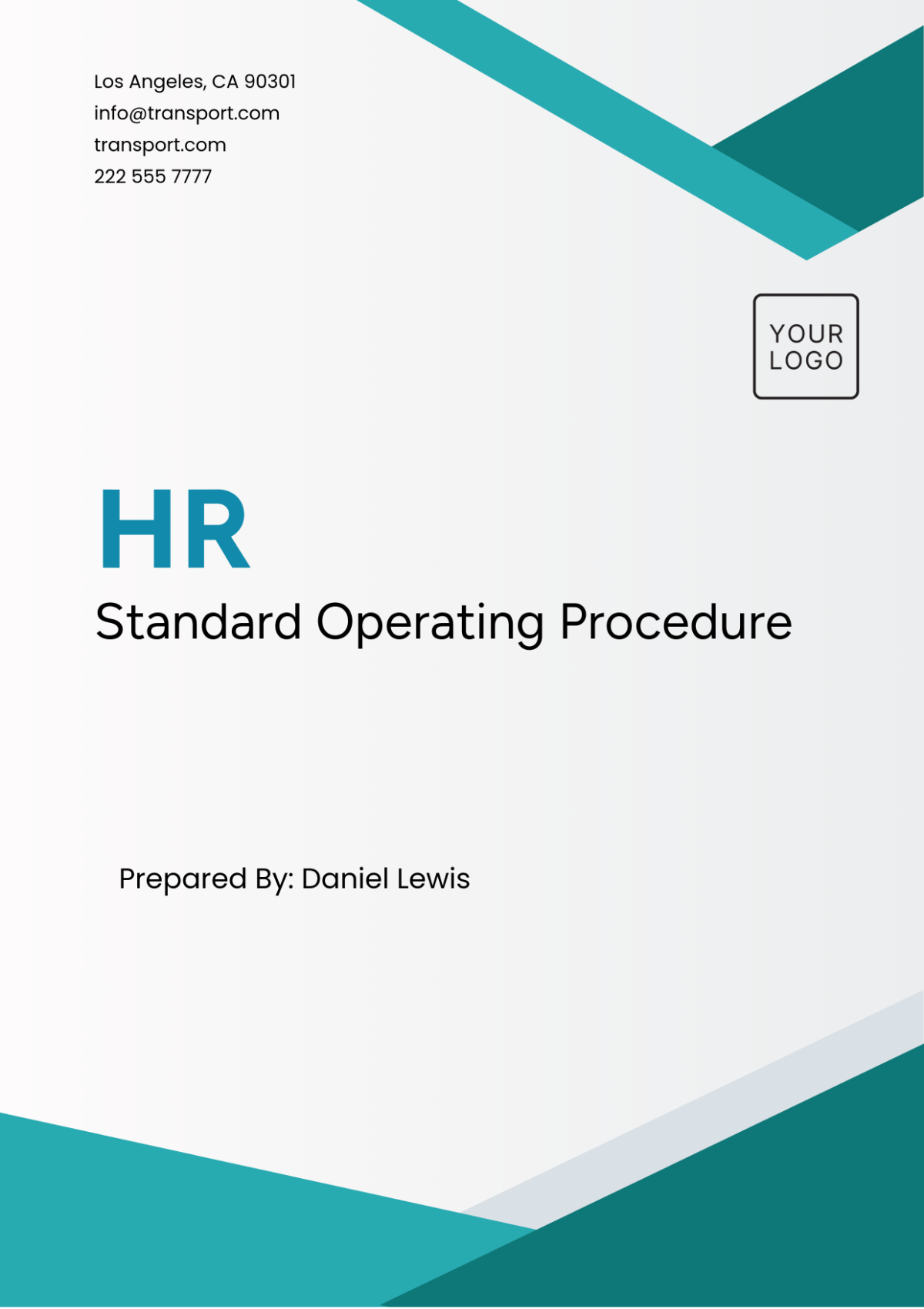HR SOP
I. Objective:
To ensure that all aspects of employee lifecycle management, including recruitment, onboarding, training, performance evaluations, and offboarding, are conducted effectively and in line with the organization's goals and values.
II. Scope:
This SOP applies to all stages of the employee lifecycle at [Your Company Name], including recruitment, onboarding, training, performance evaluations, and offboarding.
III. Responsibilities:
HR Department:
Recruitment:
Develop and maintain recruitment strategies to attract top talent.
Coordinate job postings and candidate screening processes.
Conduct interviews and make hiring recommendations.
Onboarding:
Develop and maintain an onboarding program for new employees.
Ensure new employees receive necessary training and resources.
Monitor the progress of new employees during the onboarding period.
Training and Development:
Develop and maintain the overall training and development strategy.
Identify training needs based on performance evaluations and organizational goals.
Coordinate training sessions and workshops.
Performance Evaluations:
Develop and maintain a performance evaluation system.
Conduct regular performance evaluations for all employees.
Provide feedback and support for employees to improve their performance.
Employee Offboarding:
Develop and maintain an offboarding process for departing employees.
Conduct exit interviews and gather feedback for continuous improvement.
Ensure smooth transition of responsibilities and knowledge transfer.
Managers/Supervisors:
Recruitment:
Identify staffing needs and communicate them to the HR Department.
Participate in the candidate selection process.
Provide input on the skills and qualifications required for open positions.
Onboarding:
Welcome new employees and introduce them to the team.
Provide guidance and support to new employees during the onboarding process.
Ensure new employees are trained on their job responsibilities.
Training and Development:
Identify specific training needs for their team members.
Support and encourage employees to participate in training programs.
Provide feedback on the effectiveness of training programs.
Performance Evaluations:
Conduct regular performance evaluations for their team members.
Provide constructive feedback and set performance goals.
Support employees in achieving their performance goals.
Employee Offboarding:
Participate in exit interviews and provide feedback on the employee's performance.
Ensure that all necessary offboarding tasks are completed.
Assist in the transition of responsibilities to other team members.
Employees:
Recruitment:
Participate in recruitment activities, such as referrals and networking.
Prepare for interviews and assessments.
Provide feedback on the recruitment process for improvement.
Onboarding:
Actively participate in the onboarding process and seek clarification when needed.
Complete all required training and familiarize oneself with company policies and procedures.
Provide feedback on the onboarding experience for improvement.
Training and Development:
Actively participate in training programs to enhance skills and knowledge.
Apply learning from training programs to job roles.
Share knowledge and skills with colleagues.
Performance Evaluations:
Participate in performance evaluations and provide self-assessments.
Act on feedback received to improve performance.
Discuss career goals and development opportunities with supervisors.
Employee Offboarding:
Participate in exit interviews and provide feedback on the employee experience.
Complete all necessary offboarding tasks, such as returning company property.
Assist in knowledge transfer and transition of responsibilities.
IV. Procedure:
Recruitment:
Identify Staffing Needs:
Job Posting and Screening:
Interview and Selection:
Onboarding:
Pre-boarding:
Orientation:
Training and Development:
Performance Evaluations:
Evaluation Criteria:
Evaluation Process:
Performance Improvement Plans:
Employee Offboarding:
Exit Process:
Knowledge Transfer:
V. Documentation:
Maintain records of all recruitment activities, including job postings, candidate resumes, and interview notes.
Keep records of all onboarding activities, including orientation materials and training plans.
Maintain performance evaluation records, including evaluation forms and performance improvement plans.
Keep records of all employee offboarding activities, including exit interview notes and offboarding checklists.
VI. Review and Revision:
Review this SOP annually to ensure it remains up-to-date and relevant. Revise as necessary based on feedback and changes in organizational needs.
VII. Approval:
This SOP is approved by:

[Your Name]
[POSITION]
[DATE]
VIII. Effective Date:
[DATE]
IX. Revision History:
Version 1.0: [DATE]
Version 1.1: [DATE]
X. Distribution:
HR Department
Managers/Supervisors
Employees
Note: This SOP is a guideline and may be subject to change based on the evolving needs of the organization.
Standard Operating Procedures Templates @ Template.net































